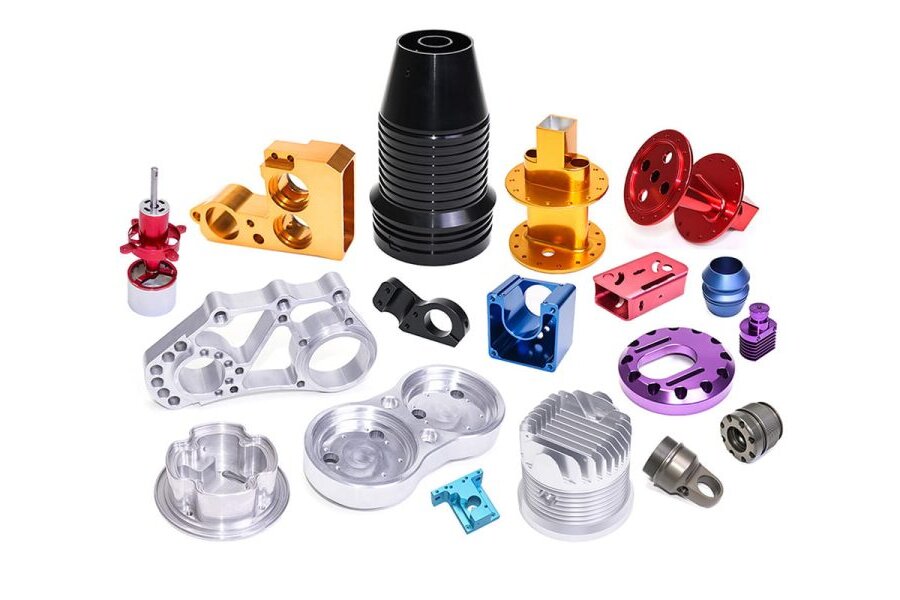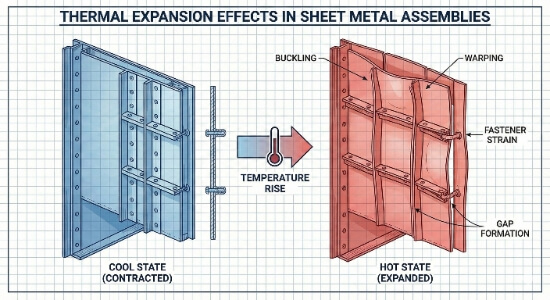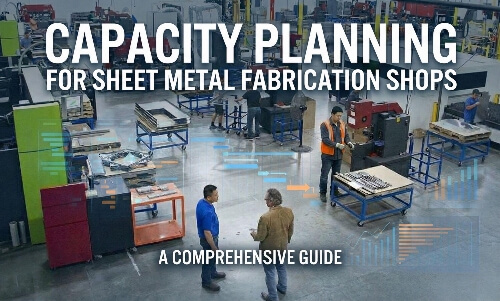알루미늄은 가볍고 유연하기 때문에 많은 산업 분야에서 일반적으로 사용됩니다. 하지만 알루미늄에 아노다이징 처리를 하면 어떻게 될까요? 이 공정은 알루미늄의 품질을 개선하여 더 강하고 시각적으로 더 매력적으로 만듭니다. 제조, 건설, 디자인 등 어떤 분야에서든 양극산화 처리된 알루미늄은 제품의 성능과 외관을 개선할 수 있습니다.
아노다이징은 알루미늄의 기능을 향상시켜 다양한 용도에 적합합니다. 아노다이징의 다양한 유형과 장점, 사용처에 대해 자세히 알아보고 싶으신가요? 계속 읽어보세요.

양극산화 알루미늄이란 무엇인가요?
알루미늄 아노다이징은 알루미늄 표면의 천연 산화물 층을 증가시키는 전기 화학 공정입니다. 아노다이징 과정에서 알루미늄을 산성 전해질 용액에 담그고 전류를 흘려보냅니다. 이렇게 하면 알루미늄이 용액과 반응하여 천연 산화물보다 훨씬 두꺼운 산화물 층을 형성합니다.
페인트나 도금과 달리 코팅은 금속의 일부이므로 벗겨지거나 부서지지 않습니다. 또한 이 공정을 통해 알루미늄에 염색이 가능하기 때문에 양극산화 알루미늄은 다양한 색상으로 제작할 수 있습니다.
알루미늄 아노다이징 방법?
알루미늄 아노다이징은 금속이 원하는 특성을 얻을 수 있도록 세심하게 제어되는 여러 단계를 거칩니다. 다음은 프로세스의 각 단계에 대한 분석입니다:
1단계: 전처리
전처리 단계는 알루미늄 표면을 깨끗하고 오염 물질이 없는 상태로 유지하는 데 매우 중요합니다. 이 단계에는 일반적으로 다음이 포함됩니다:
- 청소: 알루미늄은 화학 용액이나 연마제를 사용하여 먼지, 그리스, 오일 또는 잔여물을 제거하기 위해 철저히 세척합니다.
- 에칭: 때로는 알루미늄의 결함을 제거하고 아노다이징을 준비하기 위해 에칭을 할 수 있습니다. 이렇게 하면 산화물 층이 제대로 부착되도록 할 수 있습니다.
- 헹굼: 세척 및 에칭 후 알루미늄을 헹구어 남아있는 화학 물질이나 잔여물을 제거합니다.
2단계: 아노다이징
아노다이징 단계에서는 알루미늄을 전해질 용액(일반적으로 황산)에 담그고 전류를 통과시킵니다. 이렇게 하면 표면에 산화층이 생성됩니다. 이 단계의 핵심 사항은 다음과 같습니다:
- 전해질욕: 알루미늄은 양극(양극) 역할을 하고 음극(음극)은 일반적으로 납이나 스테인리스 스틸과 같은 금속을 사용합니다.
- 산화물 성장: 전류는 산소 이온이 알루미늄 표면과 결합하여 두꺼운 산화물 층을 생성합니다.
- 두께 제어: 산화물 층의 두께는 알루미늄이 수조에 머무는 시간과 전류의 강도에 의해 제어됩니다. 층이 두꺼울수록 내식성과 내마모성이 향상됩니다.
3단계: 색칠하기
아노다이징이 완료되면 알루미늄에 색상을 입힐 수 있습니다. 이 단계는 선택 사항이지만, 양극 산화 처리된 알루미늄을 염색하여 다양한 색상을 만들 수 있기 때문에 표준 단계입니다. 착색 과정에는 다음이 포함됩니다:
- 염색: 양극산화 처리된 알루미늄을 염료 용액에 담급니다. 산화물 층의 다공성 구조가 염료를 흡수하여 생생한 색상을 구현합니다.
- 염료의 종류: 유기 염료와 무기 염료를 모두 사용할 수 있으며, 유기 염료는 다양한 색상을 제공하는 반면 무기 염료는 내구성과 자외선 저항성이 더 뛰어납니다.
- 색칠 시간: 알루미늄이 염료에 노출되면 최종 색상의 깊이와 풍부함에 영향을 미칩니다.
4단계: 봉인
실링은 아노다이징 공정의 마지막 단계입니다. 실링은 산화물 층의 기공을 막고 내구성을 향상시키는 것을 목표로 합니다. 다음과 같은 다양한 밀봉 방법이 있습니다:
- 온수 밀봉: 양극산화 처리된 알루미늄을 뜨거운 물에 담그면 기공이 닫힙니다. 이렇게 하면 내식성이 증가합니다.
- 콜드 씰링: 화학 실란트를 표면에 도포하여 모공을 밀봉합니다.
- 스팀 씰링: 알루미늄은 증기에 노출되어 산화물 층과 반응하여 밀폐된 구조를 형성합니다.

양극산화 알루미늄의 종류
알루미늄 아노다이징은 특정 성능 요구 사항에 맞게 설계된 다양한 방법으로 수행할 수 있습니다. 가장 일반적인 유형을 살펴보겠습니다:
유형 I: 황산 아노다이징
황산 아노다이징은 가장 일반적인 아노다이징 유형입니다. 이 공정에서는 알루미늄을 황산으로 처리하여 얇은 산화층을 형성합니다.
- 두께: 일반적으로 황산 아노다이징으로 생성되는 산화물 층의 범위는 0.00002 ~ 0.0002인치(0.5 ~ 5미크론)입니다.
- 속성: 이 층은 우수한 내식성과 적당한 내마모성을 제공하며 장식용으로 자주 사용됩니다. 아노다이징 표면은 다양한 색상으로 염색할 수도 있습니다.
- 응용: 보통 적당한 내구성과 미적 감각이 요구되는 건축용 애플리케이션, 가전제품, 자동차 부품에 사용됩니다.
유형 II: 하드 코트 아노다이징
하드 코트 아노다이징(유형 II)은 황산 아노다이징을 사용하지만 산화물 층이 더 두껍습니다. 이 방법은 알루미늄의 내마모성과 내식성을 향상시킵니다.
- 두께: 유형 II 아노다이징의 산화물 층 두께는 일반적으로 용도에 따라 0.0002~0.001인치(5~25미크론) 범위입니다.
- 속성: 더 두꺼운 산화물 층은 알루미늄의 경도, 내마모성 및 부식 방지 기능을 향상시킵니다. 또한 염색 기능도 향상됩니다.
- 응용: 항공우주, 자동차, 군사용 등 부품의 과도한 사용과 환경 노출을 견뎌야 하는 분야에서 사용됩니다.
유형 III: 극한의 내구성을 위한 하드 아노다이징
유형 III 아노다이징 또는 "하드 아노다이징'는 유형 II보다 더 두꺼운 산화물 층을 포함합니다. 이 공정은 열악한 환경에서 극한의 내구성과 성능을 발휘하도록 설계되었습니다.
- 두께: 유형 III 아노다이징의 산화물 층은 일반적으로 0.002~0.003인치(50~75미크론) 범위이지만, 특정 고성능 애플리케이션에서는 더 두꺼워질 수 있습니다.
- 속성: 산화층이 매우 두껍기 때문에 마모, 부식, 마모에 대한 저항력이 뛰어납니다. 또한 독특한 무광택 마감으로 내구성이 뛰어납니다.
- 응용: 엔진 부품, 툴링, 구조 부품 등 최고의 성능이 요구되는 군사, 항공우주 및 산업 분야에서 사용되는 부품에 이상적입니다.
빠른 비교
다음은 양극산화 처리된 알루미늄의 세 가지 주요 유형을 간단히 비교한 것입니다:
| 유형 | 두께 범위 | 속성 | 응용 | 미적/색상 | 비용 |
|---|---|---|---|---|---|
| 유형 I: 황산 아노다이징 | 0.5~5미크론 | 우수한 내식성, 적당한 내마모성, 염색 용이성 | 건축, 소비자 가전, 자동차 | 높음(쉽게 염색됨) | 낮은 |
| 유형 II: 하드 코트 아노다이징 | 5~25미크론 | 경도 개선, 내마모성 및 내식성 향상, 염색 가능 | 항공우주, 자동차, 군사, 산업 장비 | 높음(염색 가능) | 보통의 |
| 유형 III: 하드 아노다이징 | 50~75미크론 | 뛰어난 내구성, 높은 내마모성, 무광택 마감, 최대 내식성 | 군사, 항공우주, 중공업 부품, 툴링 | 낮음(일반적으로 염색 없음) | 높은 |
어떤 유형의 아노다이징이 가장 적합할까요?
올바른 아노다이징 유형을 선택하는 것은 특정 애플리케이션의 요구 사항에 따라 다릅니다. 다음은 어떤 아노다이징 유형이 가장 적합한지에 대한 분석입니다:
유형 I: 황산 아노다이징
- 다음에 가장 적합: 장식용 또는 비용이 중요한 요소인 경우. 적당한 마모와 환경 조건에 노출된 부품에 이상적입니다.
- 주요 이점: 비용 효율적이고 선명한 염색이 가능하며 건축 분야에서 일반적으로 사용됩니다.
- 다음과 같은 경우 유형 I을 선택합니다.: 미관 및 비용 절감에 중점을 두고 적당한 수준의 내식성 및 내마모성이 필요합니다.
유형 II: 하드 코트 아노다이징
- 다음에 가장 적합: Type III의 극한의 내구성 없이 우수한 내마모성과 내식성이 필요한 분야. 이 유형은 내구성이 필요하지만 극한 환경에 노출되지 않는 항공우주, 자동차 및 군용 부품에 이상적입니다.
- 주요 이점: 타입 I에 비해 경도가 향상되고 내마모성이 우수하며 염색이 가능합니다.
- 다음과 같은 경우 유형 II를 선택합니다.: 내구성과 비용 사이의 균형이 필요하며 기능과 외관을 중시합니다.
유형 III: 하드 아노다이징
- 다음에 가장 적합: 극도로 혹독한 환경에서 최대의 내구성과 내마모성이 필수적입니다. 군사, 항공우주, 산업 분야에서 사용량이 많은 부품에 주로 사용됩니다.
- 주요 이점: 두꺼운 산화물 층으로 최고의 내식성과 내마모성을 제공합니다. 마무리 는 무광택인 경우가 많고 일반적으로 염색하지 않아 미관보다 내구성이 뛰어납니다.
- 다음과 같은 경우 유형 III을 선택합니다.: 마모와 부식으로부터 최대한 보호해야 하며 장식적인 마감이나 선명한 색상이 필요하지 않습니다.
양극산화 알루미늄의 장점
아노다이징 알루미늄은 기능성과 외관을 모두 향상시키는 몇 가지 이점을 제공합니다. 몇 가지 주요 이점을 살펴보세요:
내구성
아노다이징 알루미늄은 내구성이 뛰어납니다. 아노다이징 공정은 긁힘, 마모, 변색에 강한 단단한 표면을 만들어 내기 때문에 열악한 환경을 견뎌야 하는 제품에 많이 사용됩니다.
부식 저항
양극산화 처리된 알루미늄의 가장 중요한 장점 중 하나는 부식에 대한 저항력이 높아진다는 점입니다. 양극산화 처리된 층은 습기 및 환경 요인에 대한 보호막 역할을 하여 알루미늄을 더 오랫동안 온전하게 유지합니다.
미적 매력
아노다이징을 통해 알루미늄을 다양한 색상으로 염색할 수 있습니다. 마감은 시각적으로 매력적이면서 기능적으로도 우수합니다.
친환경
아노다이징은 환경 친화적인 공정입니다. 최소한의 화학 물질을 사용하고 폐기물이 거의 발생하지 않습니다. 또한 양극산화 처리된 레이어는 무독성이며 안전하게 폐기할 수 있습니다.

양극산화 알루미늄의 응용 분야
양극산화 처리된 알루미늄은 내구성, 내식성, 미적 매력으로 인해 많은 산업 분야에서 사용됩니다. 다음은 몇 가지 일반적인 응용 분야입니다:
항공우주
아노다이징 알루미늄은 항공기 프레임, 엔진 부품, 랜딩기어 등 항공우주 분야에서 사용됩니다. 추가된 내식성은 스트레스가 많은 환경에서 매우 중요합니다.
자동차
아노다이징 알루미늄은 트림 부품, 휠, 열교환기 등 자동차 부품에 널리 사용됩니다. 아노다이징 마감은 보호 기능과 세련되고 전문적인 외관을 모두 제공합니다.
건축학
양극산화 알루미늄은 건물 외벽, 창틀 및 인테리어에 자주 사용됩니다. 풍화를 견디는 능력과 매력적인 마감으로 현대 건축에 널리 사용됩니다.
전자제품
전자 업계에서는 스마트폰, 노트북, 가전제품에 아노다이징 알루미늄을 사용합니다. 아노다이징 처리된 표면은 기기를 보호하고 세련된 고급스러움을 더합니다.
소비재
아노다이징 알루미늄은 주방용품부터 스포츠 장비까지 다양한 소비재에 사용됩니다. 외관을 개선하고 일상적인 마모로부터 제품을 보호합니다.
양극산화 알루미늄의 품질에 영향을 미치는 요인
양극산화 처리된 알루미늄의 품질은 몇 가지 주요 요소에 따라 달라집니다. 이러한 요소는 아노다이징 공정이 소재의 특성을 얼마나 잘 향상시키는지에 큰 영향을 미칩니다. 다음은 최종 결과에 영향을 미치는 주요 요소입니다:
알루미늄 합금의 종류
알루미늄 합금마다 아노다이징에 반응하는 방식이 다릅니다. 6061과 같은 일부 합금은 매끄럽고 균일하게 아노다이징 처리되어 균일한 마감을 제공합니다. 7075와 같은 다른 합금은 표면이 더 고르지 않을 수 있습니다.
양극 산화 처리된 층의 두께
양극산화 처리된 층의 두께는 내구성, 내식성 및 전반적인 성능에 직접적인 영향을 미칩니다. 층이 두꺼울수록 더 많은 보호 기능을 제공하고 마모에 더 강합니다. 그러나 코팅이 두꺼우면 표면이 더 무광택으로 보일 수 있어 마감의 외관에 영향을 줄 수 있습니다.
프로세스 변수
아노다이징 공정에는 좋은 결과를 위해 세심한 관리가 필요한 여러 요소가 포함됩니다. 온도, 전압, 처리 시간은 모두 양극 산화 처리된 층의 두께와 모양에 영향을 미칩니다. 예를 들어, 전압이 높으면 일반적으로 코팅이 더 두꺼워지고 온도와 시간을 조정하면 색상 일관성과 질감에 영향을 줄 수 있습니다.
성능 향상을 위한 밀봉 및 코팅
공정 후 양극산화 처리된 표면을 밀봉하면 성능을 크게 향상시킬 수 있습니다. 아노다이징 층의 실링 잠금장치는 내식성과 마모 방지 기능을 강화합니다. 시각적 매력과 내구성을 높이기 위해 염색 또는 투명 마감과 같은 코팅도 적용됩니다.
결론
양극산화 처리된 알루미늄은 내구성, 내식성, 미적 매력이 강화된 다용도 소재입니다. 전기 화학 공정을 거치면 알루미늄은 더욱 견고하고 시각적으로 매력적으로 변하여 항공우주, 자동차 및 건축 산업에 이상적입니다.
다음 프로젝트에 아노다이징 알루미늄을 적용하고 싶으신가요? 문의하기 아노다이징 알루미늄으로 고품질의 내구성과 미적으로 만족스러운 결과를 얻을 수 있도록 도와드리는 방법을 지금 바로 알아보세요!
자주 묻는 질문
알루미늄 아노다이징은 어떤 기능을 하나요?
아노다이징 알루미늄은 표면에 두꺼운 산화물 층을 추가하여 알루미늄 본연의 특성을 개선합니다. 이 층은 부식과 마모에 대한 소재의 저항력을 높여줍니다. 또한 알루미늄을 시각적으로 더 매력적으로 만들고 다양한 색상으로 염색할 수 있어 다양한 용도로 사용할 수 있습니다.
알루미늄 아노다이징은 비용이 많이 드나요?
알루미늄 아노다이징은 세부적인 공정이 필요하기 때문에 기본 마감보다 비용이 더 많이 들 수 있습니다. 비용은 알루미늄의 종류, 양극 산화 처리된 층의 두께, 작업의 복잡성 등의 요인에 따라 달라집니다.
하드 아노다이징과 황산 아노다이징의 차이점은 무엇인가요?
하드 아노다이징은 더 두껍고 강한 산화물 층을 만드는 더 강력한 공정입니다. 따라서 내구성이 높은 용도에 이상적입니다. 표준 황산 아노다이징보다 내마모성이 우수하여 일반적으로 장식 마감에 사용되는 더 얇은 산화물 층을 생성합니다.
양극산화 처리된 알루미늄 표면은 어떻게 관리하나요?
양극산화 처리된 알루미늄을 관리하려면 중성 세제와 따뜻한 물로 정기적으로 청소하여 먼지와 이물질을 제거하세요. 양극 산화 처리된 층을 손상시킬 수 있는 연마성 세제나 독한 화학 물질을 사용하지 마세요.
알루미늄 아노다이징은 어떤 색상으로 할 수 있나요?
아노다이징 알루미늄으로 다양한 색상을 구현할 수 있습니다. 표준 색상으로는 은색, 금색, 검정색, 청동색이 있습니다. 공정에 따라 알루미늄을 빨간색, 파란색, 녹색, 보라색과 같은 밝은 색상으로 염색할 수도 있습니다.
안녕하세요, 저는 케빈 리입니다

지난 10년 동안 저는 다양한 형태의 판금 제작에 몰두해 왔으며 다양한 워크숍에서 얻은 경험에서 얻은 멋진 통찰력을 이곳에서 공유했습니다.
연락하세요

케빈 리
저는 레이저 절단, 굽힘, 용접 및 표면 처리 기술을 전문으로 하는 판금 제조 분야에서 10년 이상의 전문 경험을 갖고 있습니다. Shengen의 기술 이사로서 저는 복잡한 제조 문제를 해결하고 각 프로젝트에서 혁신과 품질을 주도하는 데 최선을 다하고 있습니다.




